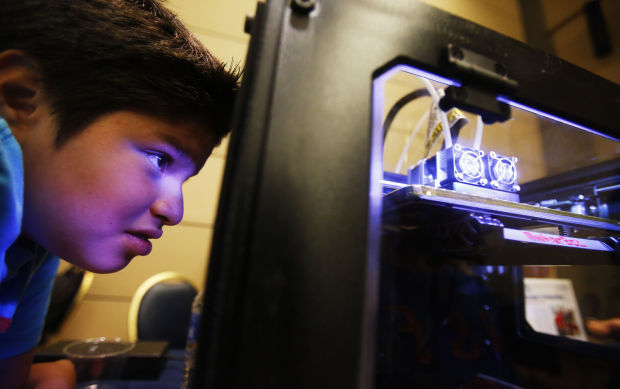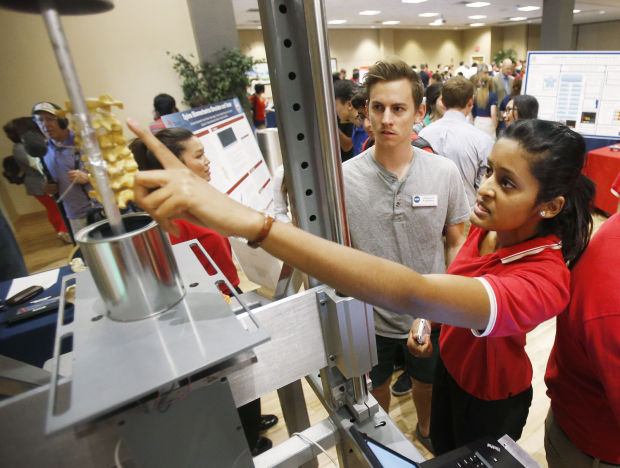You think final exams are tough?
For graduating seniors in the University of Arizona’s College of Engineering, Tuesday was a day to be challenged by a panel of professional engineers about their final projects.
Skyler Brown, part of a team that designed an automated washing system for a solar array, got peppered with questions.
“What about the water use?”
“What happens in a haboob?”
“He did a good job,” said judge Darin Williams of The Greater Whole, an innovation consulting firm.
He was prepared. Team member Morgan Abraham, who graduates this month in engineering management, said the team “grilled Skyler” in preparation for this day.
The team certainly knew how to make their invention better, Abraham said, but couldn’t accomplish that with a $3,500 budget and a mere “nine months of our lives.”
He said their research showed that solar panels lost up to 6 percent efficiency in 12 weeks of exposure to the elements. Cleaning them every two weeks cuts that loss to 1.02 percent and saves $600,000 a year in energy losses from a 44-megawatt solar farm.
If the project’s sponsor, Sunora Energy Solutions, chooses to install the automated cleaners, it might need “a team of engineers, working on making it better,” said Phillip Vidinski, a mechanical engineering senior.
Nearby on the UA Mall, a border surveillance tower disguised as a saguaro, with geometrically exact pleats, wasn’t about to fool anybody.
“Not at close range,” admitted Leah Herlihy, a materials science and engineering senior.
The team had planned a more lifelike saguaro but couldn’t fit a 3-D scanner design and custom mold into its budget, she said.
It came up with a workaround, earning a “perseverance award” in the process, she said.
The sensors and camera, however, met all the specifications that sponsor Raytheon Missile Systems required for the project. Fashioning a more lifelike skin is the easy part, Herlihy said.
Inside a ballroom at the UA’s Student Union, more projects were on display, including a machine that simulated pressure on the spinal column — sponsored by two University of Arizona neurosurgeons who want to test their surgical procedures on cadaver spines.
Sumana Veeravelli, a biomedical engineering senior, said the design is a continuing project that she hopes to keep working on as she pursues her medical degree at the UA College of Medicine.
She is not certain what specialty she wants to pursue, but said it will be something that allows her to put her engineering skills to work.
She seemed ready for anything. On this project, she said, “We designed all the electrical sub-systems, which was really quite exciting because none of us are electrical engineers.”
The 352 students who participated in the annual Engineering Design Day submitted 64 inventions and competed for $14,000 in prize money.
Entries included a project that converted a street sweeper into an onion-harvesting machine, a drone that searches for lost hikers and a phone app that tests your hearing and adjusts the volume automatically.







